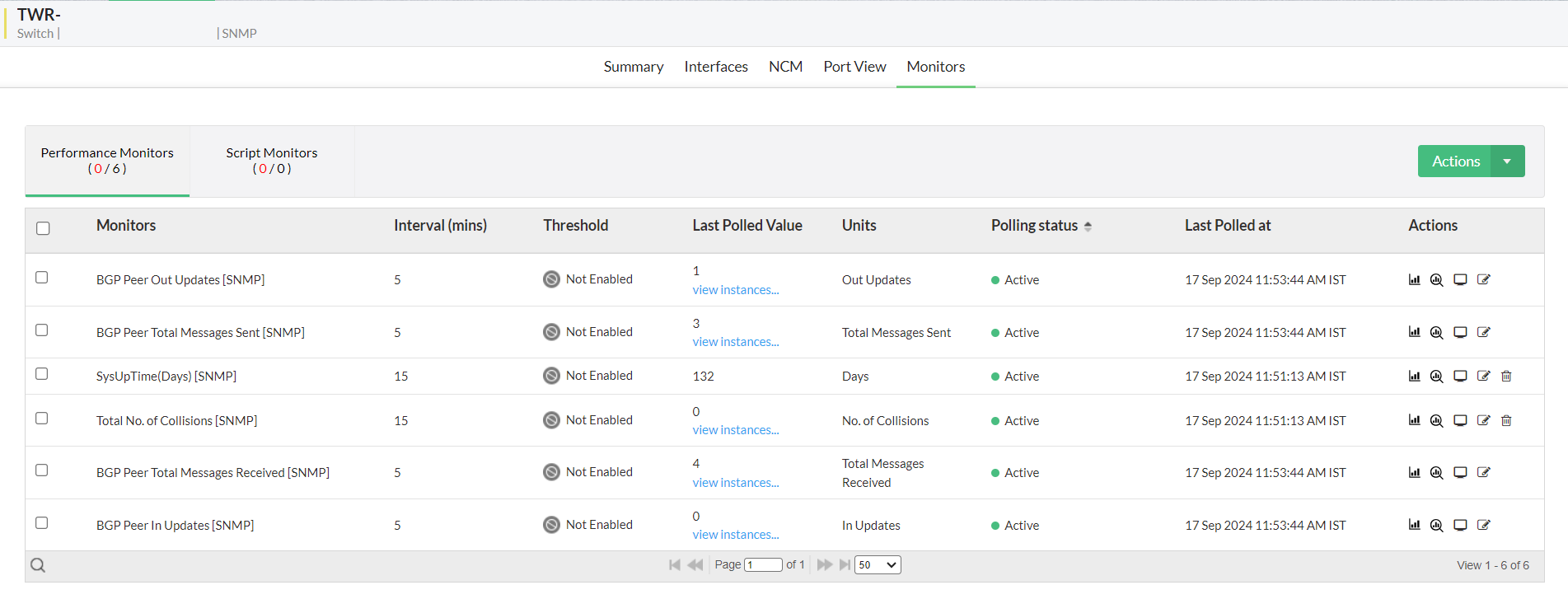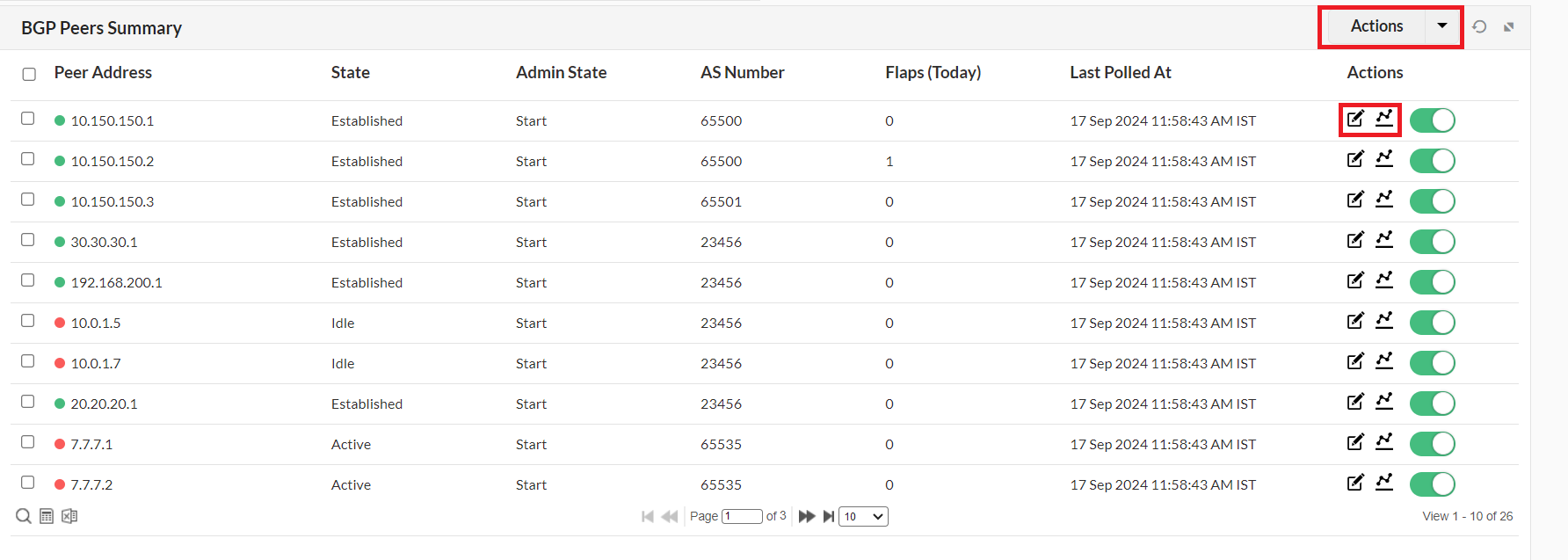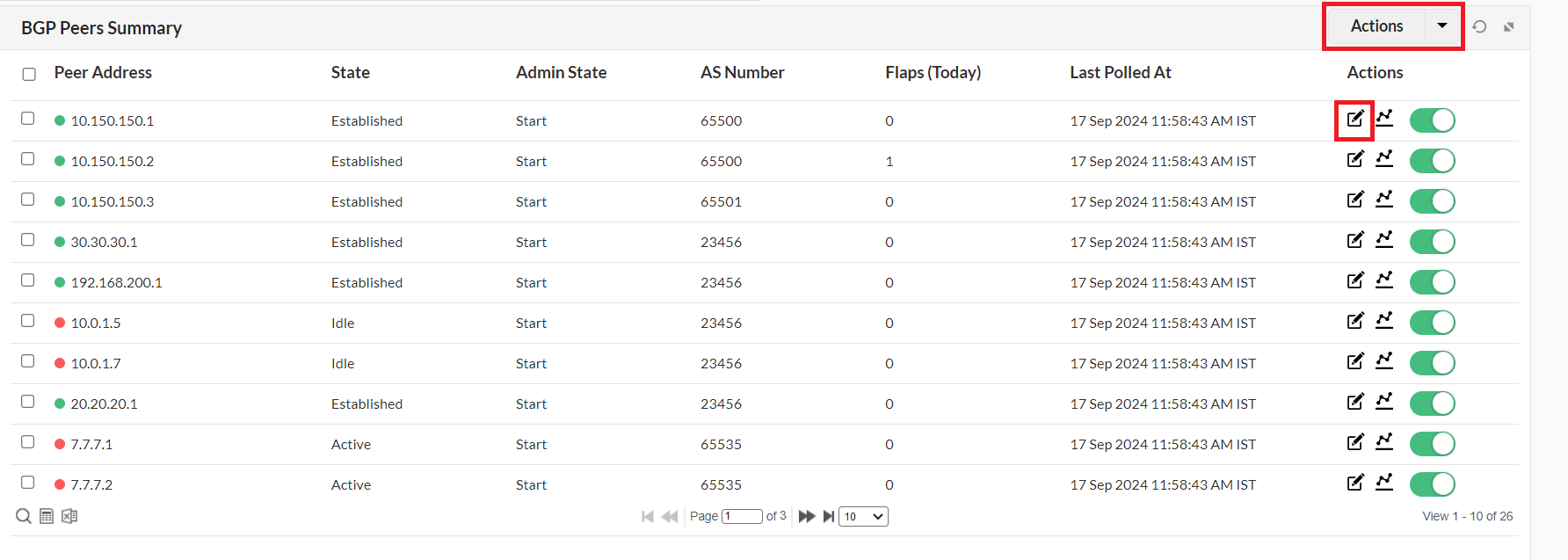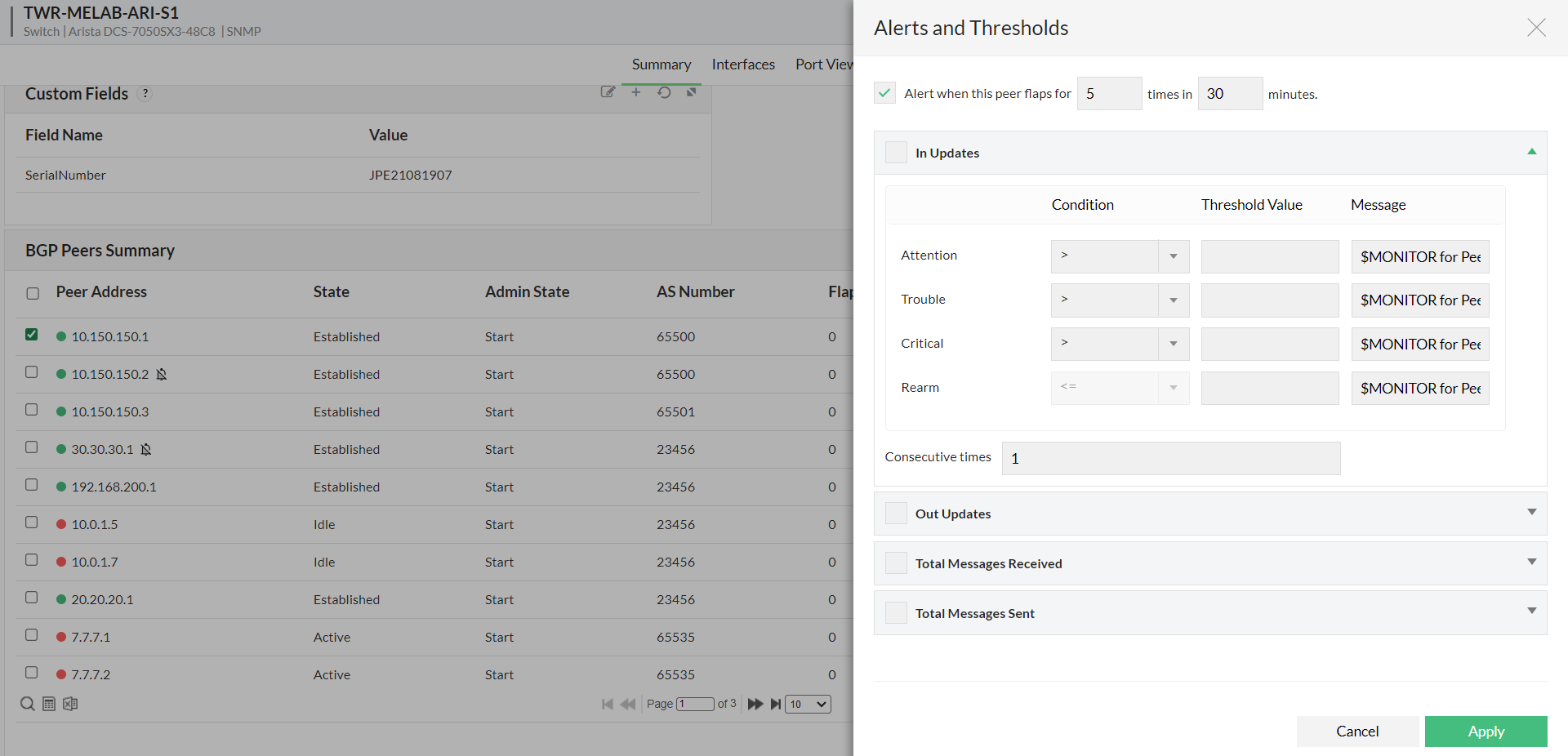OpManager BGP Monitoring
OpManager's BGP monitoring provides comprehensive visibility into the health and performance of Border Gateway Protocol (BGP) routes on your network devices. By monitoring key metrics such as peer state, admin state, number of flaps, and message exchange, you can proactively identify and address potential routing issues.
Table of Contents:
How to view the BGP peers summary?
To view the BGP peers summary, go to Inventory, and select the required device. You will be directed to the device snapshot page. Scroll to the bottom of the page to view the BGP peers summary of the following data:
- Peer Address: The IP address of the BGP peer.
- State: The current operational state of the BGP peer (e.g., Established, Active, Idle).
- Admin State: The administrative state of the BGP peer (e.g., Start, Stop).
- AS Number: The Autonomous System (AS) number of the BGP peer.
- Flaps (Today): The number of times the BGP peer's state has changed (up/down) today.
- Last Polled At: The timestamp of the last time the BGP peer's information was polled.

Available BGP Monitors
After discovering a network device, if it has routing capabilities and has BGP configured, the following BGP monitors will be added automatically to that device,
- BGP Peer In Updates: Monitors the number of BGP updates received by a peer.
- BGP Peer Out Updates: Monitors the number of BGP updates sent by a peer.
- BGP Peer Total Messages Sent: Monitors the total number of BGP messages sent by a peer.
- BGP Peer Total Messages Received: Monitors the total number of BGP messages received by a peer.

How to view the BGP monitoring graphs?
Click on the graph icon under the actions column to get a consolidated graphical view of the peers summary. You can also click an individual graph to get a drill down view of it.

Using the Actions button, suppress or unsuppress alarms, manage or unmanage peers, and set thresholds for them in bulk. You can also unmanage or manage peers by toggling the green button on or off.
How to assign thresholds for the peers?
You can set alerts and assign thresholds for In updates, Out updates, Total messages received, and sent for the available BGP peers. To do so:
- Go to the peer summary page and click on the edit button on any one of the peers.
- You can set alerts based on the severity. To know more about alerts and thresholds, click here.
- You can also assign thresholds for multiple peers at once by selecting the required peers and assigning using the Actions button.

How to set alerts for Flapping?
Flapping in BGP peers happens when a route keeps going up and down quickly, making the network unstable and causing delays or packet loss. To get alerts for Flapping, click on the Actions button, or the Edit icon in the actions column of any of the peers, and check the Alert when this peer flaps for _ times in _ minutes checkbox.

- Go to Settings -> Notifications -> Notification profiles, and click Add.
- Select email, and enter the to mail ID and other required data, and click Next.
- In the choose criteria tab, select the When a BGP peer is in problematic condition criteria, and click Next.
- Select the required devices, click Next.
- Select a Time window, enter the Delayed trigger and Recurring trigger values, and select the required fields.

- Click Next, enter a profile name, and verify the above profile configurations using the Test actions button. Click Save.
Thank you for your feedback!
